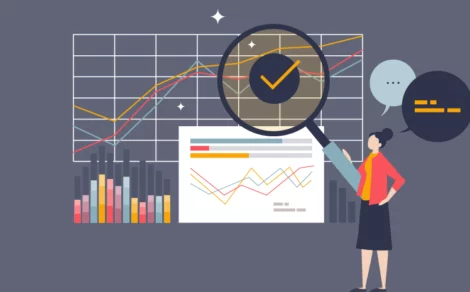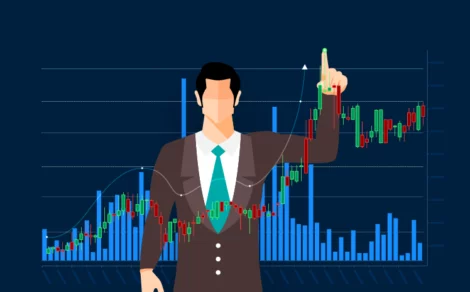Yes, you can legally engage in forex trading in India, but with certain restrictions. Retail traders can only trade specified currency pairs through authorised exchanges like NSE, BSE, and MCX.
Toruscope » Forex & Currency Trading » Understanding Forex Trading: A Complete Guide for Indian Investors
Forex trading has emerged as an appealing option for many Indian investors seeking new opportunities in the global financial markets. With its massive trading volume of over $6.6 trillion daily, forex markets offer unique advantages that traditional stock markets cannot match.
This article walks you through different aspects of forex trading, helping you make informed decisions about this dynamic trading avenue.
What Is Forex Trading?
The forex trading meaning simply refers to the purchase and sale of currencies to earn profit from movements in the exchange rates. It is regarded as the most liquid market globally where participants exchange one currency for another at an agreed price.
- Global foreign exchange markets are open 24 hours a day, five days a week. This allows traders to participate according to their convenience across different time zones.
- In this market, currency trades are done in pairs. For instance, when you trade USD/INR, you are essentially speculating on how the US dollar will perform against the Indian rupee.
- The foreign exchange market involves various participants, including banks, financial institutions, corporations, governments, and individual retail traders like you.
| Market Center | Local Trading Hours | Indian Standard Time (IST) | Key Characteristics |
| Sydney | 7:00am-4:00pm EST | 2:30am-11:30am | Opening market for the new trading day; influences AUD pairs |
| Tokyo | 9:00am-6:00pm JST | 5:30am-2:30pm | Major Asian session; focuses on JPY, AUD, NZD pairs |
| Mumbai | 9:15am-3:30pm IST | 9:15am-3:30pm | Indian trading session; NSE and BSE hours for INR pairs |
| Frankfurt | 8:00am-4:00pm CET | 11:30am-7:30pm | Early European session; EUR pairs become active |
| London | 8:00am-4:00pm GMT | 1:30pm-9:30pm | Highest volume and liquidity; all major pairs trade actively |
| New York | 8:00am-5:00pm EST | 6:30pm-3:30pm | USD pairs dominate; Americas session |
Note: The forex market is officially closed from Friday 5 PM EST until Sunday 5 PM EST.
How Forex Trading Works
The mechanics of forex trading are relatively straightforward. When you enter a forex position, you are simultaneously buying one currency while selling another. The price movement in currency pairs creates opportunities for profit.
For example, if you believe the US dollar will strengthen against the Indian rupee, you might buy the USD/INR pair. If your analysis proves correct and the dollar does strengthen, you can sell the pair at a higher price. This will help you register a profit on the transaction.
- Forex pairs are always quoted as ‘pips’ (percentage in point).
- This represents the smallest price move that a given exchange rate can make.
- Most currency prices are quoted to four decimal places, where a pip is generally the last decimal place.
- Market price movements are measured, and profits are calculated based on these pips.
Key Elements in Forex Trading
The components that investors considering forex trading must be aware of have been listed below:
- Base and Quote Currencies: Consider a popular international currency pair like EUR/USD. Here, the Euro (EUR) would be the base currency, and the US Dollar (USD) would be regarded as the quote currency.
- Exchange Rate: The exchange rate tells you the amount of quote currency you need to purchase a single unit of the base currency.
- Spread: This is the difference between the buying price (ask) and selling price (bid) of a currency pair.
- Leverage: Forex brokers often offer leverage, allowing you to control a large position with a relatively small amount of capital.
Types of Forex Markets
The forex market operates through different channels, each serving specific needs:
-
Spot Market
It is the market where current market rates are used for buying and selling currencies. Transactions in this market are settled ‘on the spot’ or within a short period, typically two business days. This is the most popular market for retail investors due to its simplicity and immediate nature.
-
Forward Market
In the forward market, contracts are bought and sold OTC between parties who determine the terms among themselves. These contracts enable you to lock in a specific exchange rate for a given future date, providing a hedge against currency market volatility.
-
Futures Market
Similar to forwards, futures contracts specify a standard size and settlement date. However, futures are legally binding, standardised contracts traded on exchanges. They’re commonly used by companies that want to hedge against future exchange rate fluctuations.
-
Swap Market
Large financial institutions and central banks often arrange currency swaps to manage currency exposure in the long term. The process here involves exchanging interest and principal in one currency for the same in another currency.
Different Approaches in Forex Trading
Becoming a successful forex trader demands strategy, discipline, and continuous learning. Here are some approaches that might help you navigate this market:
Technical Analysis
This approach involves studying price charts and using indicators to forecast future price movement. Technical analysts believe that historical price patterns tend to repeat themselves, making them valuable for predicting future movements.
- Trend Following: Here, you identify and trade in the same direction as established trends with the help of tools like moving averages (50-day, 100-day, 200-day). For example, as the 50-day moving average goes beyond the 200-day moving average, it often signals a bullish trend. This is also known as a golden cross. Identify and trade in the direction of established trends using tools like moving averages (50-day, 100-day, 200-day).
- Oscillators: Tools like the Stochastic Oscillator and Relative Strength Index (RSI) help determine overbought or oversold situations in the market. When the RSI drops below 30, the currency pair might be oversold, suggesting a potential buying opportunity.
- Chart Patterns: Recognise formations like head and shoulders, double tops/bottoms, and triangles. For instance, a bullish flag pattern after an uptrend often indicates a continuation of the upward movement after a brief consolidation period.
- Fibonacci Retracement: Based on the mathematical Fibonacci sequence, these levels (23.6%, 38.2%, 50%, 61.8%) often act as support or resistance in retracements during trends.
Fundamental Analysis
Fundamental analysis examines economic indicators, central bank policies, and geopolitical events that might affect currency values. This approach focuses on the underlying economic health of countries represented by currency pairs.
- Economic Indicators: Key data points include GDP growth rates, employment figures, inflation rates, and retail sales. For example, if the US releases stronger-than-expected employment data, the USD might strengthen against other currencies.
- Interest Rate Decisions: Central banks set interest rates that directly impact currency values. Higher interest rates typically attract foreign investment, strengthening the currency. When the Reserve Bank of India increases rates, the INR often gains value against other currencies.
- Political Stability: Elections, policy changes, and geopolitical tensions can cause significant currency fluctuations. For instance, Brexit negotiations created substantial volatility in GBP pairs.
- Economic Calendars: Successful traders maintain calendars of upcoming economic releases and central bank announcements to prepare for potential market sentiment shifts.
Risk Management
Perhaps the most crucial aspect of profitable forex trading is effective risk management. Even the best strategy will fail without proper risk controls.
- Position Sizing: Limit your risk to 1-2% of your trading capital on a single trade. For a ₹100,000 account, this means limiting potential loss to ₹1,000-₹2,000 per trade.
- Stop-Loss Orders: Always set stop-loss orders to automatically exit positions if the market price moves against you beyond a predetermined point. This prevents emotions from causing you to hold losing positions too long.
- Take-Profit Levels: Establish clear profit targets before entering trades. A common approach is setting risk-reward ratios, such as risking 1% to gain 3% (1:3 ratio).
- Leverage Caution: While brokers might offer high leverage (like 50:1), consider using lower effective leverage (10:1 or less) to prevent account-wiping losses during volatile periods.
Opening a Forex Trading Account in India
For Indian residents, getting started with forex trading involves several steps:
- Choose a reliable, SEBI-registered broker that offers currency trading. Research brokers with strong regulatory compliance, competitive fees, and positive user reviews.
- Complete the KYC process by submitting identification documents. Provide Aadhaar, PAN card, address proof, and passport-sized photographs for account verification.
- Fund your account using approved payment methods. Transfer money via net banking, UPI, or bank transfers to begin trading.
- Familiarise yourself with the trading platform. Practice navigating charts, placing orders, and using analysis tools before actual trading.
- Begin with demo trading before risking real money. Use virtual accounts to test strategies without financial risk while building confidence.
In India, retail forex trading is regulated, and only certain currency pairs are allowed for trading by the RBI and SEBI. These typically include pairs involving the Indian rupee (INR) and major currencies like USD, EUR, GBP, and JPY.
Advantages and Limitations of Forex Trading
Here are the different advantages and limitations related to forex trading
Advantages
- High Liquidity: The forex market offers exceptionally high liquidity, which makes it easier for you to exit or enter positions even for large trade sizes.
- 24-Hour Market: The forex markets are open 24 hours a day, five days a week. This offers you flexibility to align your strategy with different schedules.
- Low Entry Barrier: Many brokers allow you to start with relatively small amounts of capital.
- Potential for Profit: Forex offers profit opportunities in both rising and falling markets since you can trade in either direction.
Limitations
- Volatility Risk: Exchange rates can fluctuate rapidly due to unexpected economic or political events.
- Leverage Risk: While leverage can help increase profits, it can equally amplify losses.
- Complexity: The interplay of global factors affecting market sentiment requires comprehensive knowledge.
- Regulatory Restrictions: In India, there are limitations on which currency pairs you can trade and how.
Final Words
Forex trading offers exciting opportunities for Indian investors looking to diversify beyond traditional assets. However, success in this market doesn’t come overnight. It requires patience, disciplined learning, and practical experience.
Want to explore investment opportunities beyond forex? Open a 3-in-1 account with Torus Digital today and gain access to a comprehensive trading platform that meets all your investment needs.
Frequently Asked Questions
Start with educational resources, join online communities, use demo accounts to practice, and consider mentorship from experienced traders. You need to keep updating your skills and knowledge for success in the forex market.
While many traders do make profits, consistency requires discipline, effective strategy, and strong risk management. Most successful traders view it as a professional endeavour rather than a quick path to riches.
No formal qualifications are required to trade forex. However, knowledge of financial markets, analytical skills, and emotional discipline are essential for success.
No, the RBI has specific guidelines. Indian residents can trade only in designated currency pairs through regulated exchanges, and certain forms of OTC forex trading are not permitted.
Unlike gambling, forex trading can be approached systematically with analysis and strategy. While there’s always risk involved, informed trading decisions based on research and analysis differ fundamentally from chance-based gambling.
Related Reads
How to Calculate F&O Turnover: A Practical Guide for Traders
Trading in futures and options (F&O) isn't just about market strategies and profit margins;...
By: torus
- 8 mins
- 14.May.2025
- 0(0)
- 290
A Beginner's Guide to Starting Forex Trading
Forex trading is increasingly becoming popular with traders looking to diversify their investment portfolios....
By: torus
- 11 mins
- 13.May.2025
- 0(0)
- 288
Is Forex Trading Legal in India?
The global currency market appeals to millions of traders worldwide with its accessibility and...
By: torus
- 8 mins
- 05.May.2025
- 0(0)
- 558
What is Forex Trading & How Profitable is It?
The world of forex trading has captured the imagination of countless Indian investors looking...
By: torus
- 9 mins
- 05.May.2025
- 0(0)
- 471
Disclaimer: The content provided in this blog is for informational purposes only and does not constitute financial advice or recommendations. The content may be subject to change and revision. Readers are encouraged to conduct their own research and consult with a qualified financial advisor before making any investment decisions. Torus Digital and its affiliates takes no guarantees whatsoever as to its completeness, correctness or accuracy since these details may be acquired from third party and we will not be responsible for any direct or indirect losses or liabilities incurred from actions taken based on the information provided herein. For more details, please visit www.torusdigital.com.
Tenneco Clean Air IPO Listing: Strong Market Debut with 27% Premium
Tenneco Clean Air India Ltd made a confident entrance into the public markets on...
By: torus
- 5 mins
- 19.Nov.2025
-
3.7(6)
-
255
Stock to Buy Today: November 19, 2025
The Indian stock market witnessed a mild decline on November 18, 2025, ending a...
By: torus
- 4 mins
- 19.Nov.2025
-
4.3(3)
-
255
Mirae Asset Infrastructure Fund NFO: A Sector-Focused Bet on India’s Growth
Mirae Asset Mutual Fund has launched a new equity scheme — Mirae Asset Infrastructure...
By: torus
- 4 mins
- 18.Nov.2025
-
4.3(6)
-
255
Emmvee Photovoltaic IPO: Shares Make Muted Market Debut, List Flat At ₹217
Emmvee Photovoltaic Power made a muted debut on 18 November 2025, listing flat at...
By: torus
- 3 mins
- 18.Nov.2025
-
3.7(6)
-
255






